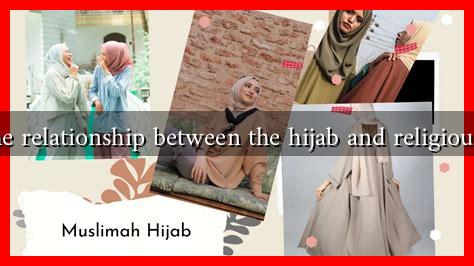-
Table of Contents
What is the Relationship Between the Hijab and Religious Identity?
The hijab, a traditional headscarf worn by many Muslim women, is often viewed as a symbol of religious identity and cultural heritage. However, its significance extends beyond mere fabric; it embodies a complex interplay of faith, personal choice, and societal expectations. This article explores the multifaceted relationship between the hijab and religious identity, examining its implications in various contexts.
The Hijab as a Symbol of Faith
For many Muslim women, the hijab is a profound expression of their faith and commitment to Islamic principles. The Quran, the holy book of Islam, encourages modesty in dress, and the hijab is often seen as a manifestation of this directive. Key points include:
- Religious Obligation: Many interpret the Quranic verses, such as Surah An-Nur (24:30-31) and Surah Al-Ahzab (33:59), as mandates for women to cover their hair and bodies.
- Spiritual Connection: Wearing the hijab can enhance a woman’s spiritual identity, serving as a constant reminder of her faith and values.
- Community Belonging: The hijab fosters a sense of belonging within the Muslim community, reinforcing shared beliefs and practices.
Personal Choice and Empowerment
While the hijab is often associated with religious obligation, many women choose to wear it as an expression of personal empowerment. This perspective highlights the hijab as a choice rather than a compulsion. Consider the following:
- Autonomy: For some women, wearing the hijab is a conscious decision that reflects their autonomy and individuality.
- Resistance to Objectification: The hijab can serve as a form of resistance against societal pressures to conform to Western beauty standards, allowing women to define their own identities.
- Empowerment through Identity: Many women report feeling empowered by their choice to wear the hijab, viewing it as a means of reclaiming their identity in a world that often marginalizes them.
Societal Perceptions and Challenges
The hijab is not without its challenges, particularly in societies where it is viewed with suspicion or prejudice. The relationship between the hijab and societal perceptions can significantly impact a woman’s experience. Key challenges include:
- Discrimination: In many Western countries, Muslim women who wear the hijab face discrimination in various forms, including employment and social interactions.
- Misunderstanding: The hijab is often misunderstood as a symbol of oppression, leading to negative stereotypes and stigmatization.
- Legislative Barriers: Some countries have enacted laws banning the hijab in public spaces, further complicating the relationship between religious identity and personal choice.
Case Studies: Global Perspectives
Examining the hijab in different cultural contexts reveals the diverse meanings it holds for women around the world. Here are a few notable examples:
- France: The 2004 law banning religious symbols in public schools has sparked significant debate about secularism and religious expression, leading to protests and discussions about identity.
- Turkey: The hijab has been a contentious issue in Turkish politics, with bans in public institutions historically reflecting broader struggles over secularism and religious freedom.
- Iran: In Iran, the hijab is mandatory, and women face legal repercussions for non-compliance, raising questions about autonomy and state control over personal choices.
Conclusion: The Hijab as a Complex Symbol
The relationship between the hijab and religious identity is intricate and multifaceted. For many, it serves as a powerful symbol of faith, personal choice, and cultural identity. However, societal perceptions and challenges can complicate this relationship, leading to discrimination and misunderstanding. As discussions around the hijab continue to evolve, it is essential to recognize the diverse experiences of women who wear it and to foster an environment of respect and understanding.
In summary, the hijab is not merely a piece of clothing; it is a complex symbol that embodies faith, personal empowerment, and cultural identity. Understanding its significance requires a nuanced approach that considers individual choices and societal contexts. For further reading on this topic, you can explore resources from organizations like the Human Rights Watch that address issues of religious freedom and women’s rights globally.

